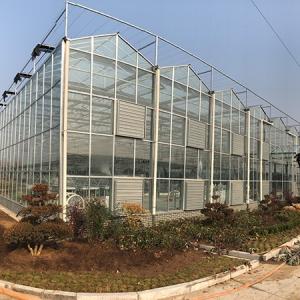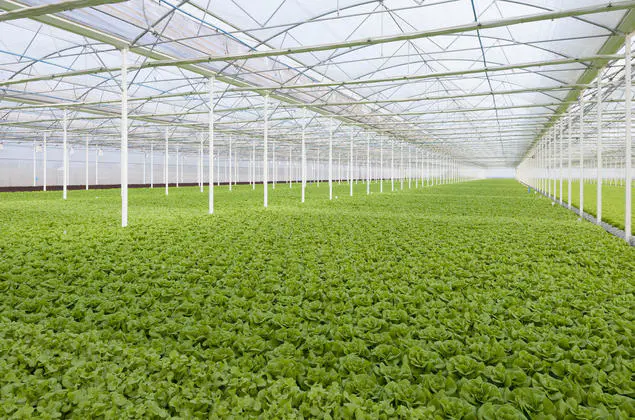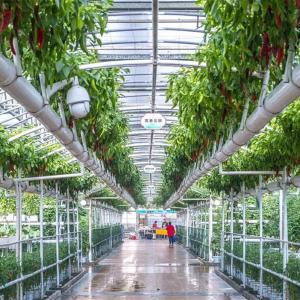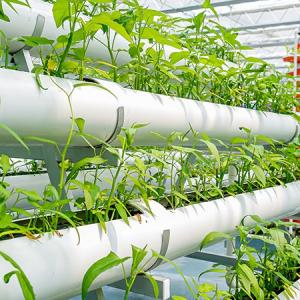Hydroponic Fodder Farm in China
hydroponic fodder farming is an innovative agricultural practice that involves growing fodder for livestock without soil, using nutrient-rich water solutions. The controlled environment of hydroponics allows for efficient and sustainable fodder production, making it an attractive solution for China's growing demand for animal feed.
China has embraced hydroponic fodder farming as a viable solution to meet the increasing demand for animal feed. The country's large-scale livestock industry requires substantial amounts of fodder, and hydroponics presents an efficient and sustainable alternative. Several hydroponic fodder farms have been established across China, utilizing advanced technology and techniques to maximize productivity.
What is Hydroponic Fodder Farming?
Hydroponic fodder farming is a technique that involves cultivating nutritious green fodder using hydroponic systems. Instead of traditional soil-based methods, this approach utilizes water-based nutrient solutions to provide plants with all the necessary elements for growth. The process typically starts with high-quality seeds being soaked in water, and then they are spread out on trays or racks. These trays are then placed in a controlled environment where they receive a carefully regulated amount of light, temperature, and humidity. Within a few days, the seeds germinate and grow into lush, green fodder, which is then harvested and fed to livestock.
Cost Considerations in Commercial Hydroponic Fodder Systems
The capital investment required to set up hi-tech, automated, commercial hydroponic fodder systems with environmental control and other supporting infrastructure is significantly higher than traditional soil-based farming. Furthermore, the operating costs associated with hydroponic systems are much higher due to the need for specialized equipment and technical knowledge. In addition, mold growth and other problems can be costly to control and prevent.
The operating cost of CEFP also depends on water consumption, energy demands, and nutrient requirements. In addition, the indoor environment must be controlled in terms of temperature and relative humidity to achieve sustainable production. The use of sensors for monitoring and controlling growth parameters can be helpful in reducing costs. However, more research is needed to improve the accuracy and efficiency of existing automation systems for achieving sustainability goals. This could include improved modular electronics, low power consumption, and long-range wireless communication technology.
Fodder Hydroponics: Cost-Effective Green Feed Production for Livestock
Fodder hydroponics is a cost-effective way to produce green fodder and reduce feed costs for livestock. It is a temperature-controlled environment that cultivates barley, maize, sorghum, and other green sprouts for animal fodder. It also requires less water than traditional fodder. It can be grown in any climate and can help reduce feed costs.
In a typical hydroponic system, the seeds are placed in trays without soil and sprayed with water and soluble nutrients on a daily basis. The resulting sprouts are harvested after six days and can be fed to livestock. Fodder hydroponics can also increase milk production and protein content.
However, the potential energy consumption and environmental impacts of controlled environment fodder production need to be evaluated. In addition, it is important to analyze the different growth techniques for fodder production.
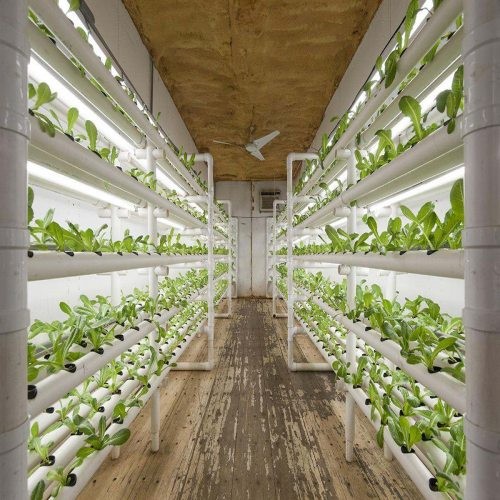
Hydroponics for Controlled Environment Fodder Production
Fodder farming is a great way to produce healthy crops without using much land. It requires less water and fertilizers than traditional agriculture, and it can be used in any climate. It also reduces the need for weed control and other pesticides, and it produces food in a shorter period of time than traditional farming methods.
Hydroponic fodder plants are grown in trays with nutrient-rich solutions and water. The growing trays are placed on an angle or slope, which facilitates the drainage of excess water and recirculation of the solution. It is important to use clean, filtered water that is free of salts and other contaminants.
Fodder production with hydroponic systems has the potential to provide a sustainable alternative to conventional agriculture. However, there are still a few areas of concern, including the impact on the environment and energy consumption. This article provides an analysis of the current state and growing techniques for controlled environment fodder production (CEFP). It also discusses the prospects, challenges, and research needs to achieve sustainability goals.
Efficient, Cost Savings, and Sustainable Hydroponic Fodder Production
With hydroponic fodder production, only seed and water are required as production inputs. This reduces labour and infrastructure costs and minimizes energy expenditure. Moreover, hydroponic fodder requires less storage space and can be produced all year round. The process takes only 7-8 days from seed to green fodder, compared with 45-60 days under traditional methods. Additionally, the cost of transportation and handling is significantly reduced. Weifang Kunsheng Agriculture’s advanced fodder systems use energy efficiently by monitoring air temperature, RH, VPD, and ST with a hybrid data logger. This allows the system to identify deviations from the desired set-point conditions.
It is estimated that 1.5-2 liters of water are needed to produce 1 kg of fodder hydroponically, which is only about 2-5% of the water used in traditional fodder production. This is especially important in regions with water shortages. However, it is essential to ensure that the water is clean to avoid contamination with bacteria and fungi.
